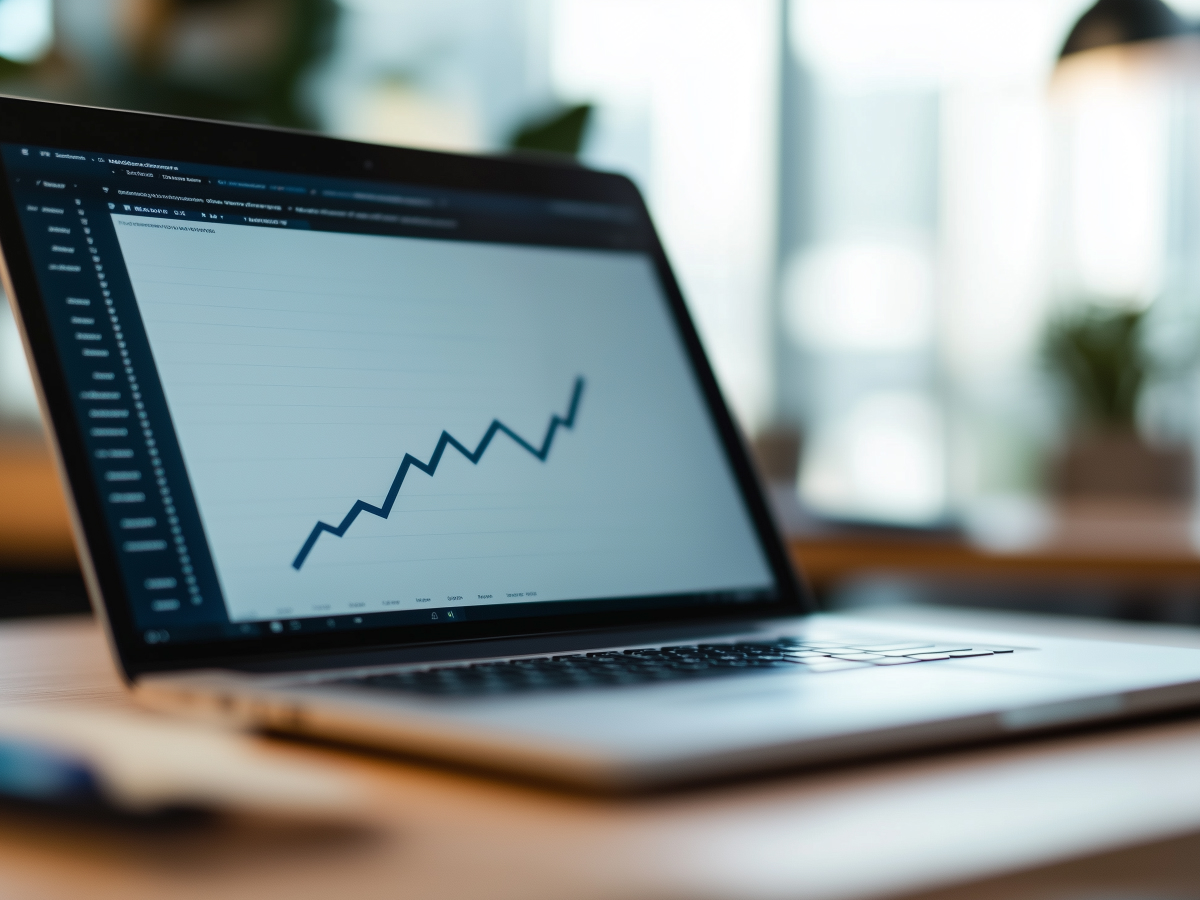Meta’s ad business remains resilient despite external challenges
Meta’s ad business is holding strong. The past quarter proved that even with some turbulence, like relaxed fact-checking policies and global trade shifts, advertisers didn’t flinch. Q1 results show confidence is still intact. Not losing ground when people expected a pullback says a lot about Meta’s value to marketers. The system they’ve built continues to deliver real visibility and performance, and advertisers clearly aren’t seeing enough downside to shift budgets elsewhere.
Changes in U.S. trade policy, including the end of the de minimis exemption, made headlines, but they didn’t put a dent in April’s performance. That says one thing, Meta remains adaptive. Market conditions moved, but operational momentum continued. We’re not seeing brands move away due to public scrutiny or policy anxiety. The message here is clear: results matter more than noise. So long as Meta keeps delivering them, advertisers will keep showing up.
Business leaders need to think in terms of signal versus noise. Right now, the signal says advertising demand on Meta is still high, trust remains strong, and revenue continues to rise, even with the policy shifts. That’s a solid starting point for confidence.
Online commerce and the Asia-Pacific region are driving ad revenue growth
Online commerce is Meta’s most reliable revenue engine right now. Even with uncertainty in global trade, eCommerce stays dominant in driving ad revenue growth year over year. That’s not surprising. Digital buying behaviors continue to expand, and Meta sits directly in the stream of that demand, especially with mobile-first experiences. The core infrastructure is tuned for performance at scale, and with commerce playing an even bigger role post-COVID, this growth trajectory isn’t slowing down.
Geographically, the Asia-Pacific region is carrying the load in ad impression growth. The demand coming from that region is substantial. Rising digital adoption, younger demographics, and mobile-led engagement are driving serious volume. Advertisers are increasing spend, and that keeps feed monetization high. What’s more, ad pricing is also rising. That means Meta isn’t just growing reach. It’s growing effectiveness.
C-level leaders should see this as a case for regional scale. If you’re operating in or expanding into Asia-Pacific, Meta is delivering volume and performance. It’s a revenue growth channel that works even amid global friction. Ignore that, and you’re likely missing one of the more cost-efficient routes to scaled brand presence.
Threads’ advertising rollout isn’t built for immediate growth
Threads is now open to advertisers in over 30 markets, which is a meaningful expansion, but don’t expect a swift revenue bump. Meta isn’t pushing this platform as a short-term driver of impression or revenue growth. That’s not the strategy. Right now, Threads is a long-game initiative. The foundation is still being laid, and the advertising environment on the platform hasn’t matured.
Executives should understand that this rollout positions Meta to grow relevance in text-led platforms, but there’s no immediate financial weight behind it. It’s a signal more than a surge. Meta continues to experiment here without putting quarterly expectations on Threads. And when you’re navigating markets filled with legacy platforms and shifting user behavior, getting the timing and format right matters more than just turning on ad inventory.
If you’re weighing Threads as part of your digital spend, stay informed but cautious. Let the product stabilize. The reach and scale are not yet at the levels needed to warrant major reallocations of budget. What Meta does gain here is optionality, another layer to its platform ecosystem that leaves room to grow without pressure to deliver short-term returns.
Meta is pushing monetization further with AI-driven ad tools
Meta isn’t waiting on external shifts, it’s making its own. In Q1, the company launched the Generative Ads Recommendation Model, an AI-driven tool that changes the way ad ranking works across its platforms. Early evidence shows a 5% lift in conversions from Reels alone. That’s not theory. That’s measurable outcome. When scaled across Instagram, Facebook, and other surfaces, the compounding effects can be substantial.
Alongside this, they’ve built more functionality into the existing Advantage+ AI tool suite. One notable addition is an incremental attribution feature. Testing showed a 46% increase in incremental conversions compared to baseline business-as-usual campaigns. That’s not a small jump, it’s performance that supports higher margins on the same spend. These aren’t conceptual use cases. Advertisers are deploying the tools and seeing results.
If you’re running ad performance teams, this is where you pay attention. Meta is creating an infrastructure where machine learning doesn’t just optimize delivery, it understands business intent and delivers growth. It shortens the time between spend and return. That’s valuable operational efficiency and better ROI. These aren’t just tools, they’re levers for teams aiming to reduce friction between budget allocation and measurable outcomes.
Meta is turning advertising into an AI-driven performance system
Meta is moving quickly to rebuild how advertising works, less about inputs, more about outcomes. The company’s goal is simple: let businesses state an objective, set a value, and let AI take over execution. That changes the advertiser relationship from operational support to performance driver. It’s a system that compresses complexity using AI, so the only thing that matters is whether it delivers results.
This is a shift in the underlying model. Instead of managing campaigns through layers of setting, testing, and optimization, advertisers define success, and Meta’s systems deliver it at scale. This structure handles variable testing, media placement, and cost efficiency faster than any manual setup. And it’s now expanding from Reels into the broader ecosystem.
Executives should see this as a fundamental retooling of ad infrastructure. The payoff is more predictable performance, with fewer manual steps. That reduces operating load and opens up budget for reinvestment elsewhere. Meta is building a system that’s designed to remove friction in ad execution entirely. If they succeed, it’s going to set new expectations for what performance marketing looks like over the next five years.
Meta sees AI elevating the role of advertising in the global economy
Meta doesn’t just see AI as a performance upgrade, it’s betting on a larger shift. The company believes AI will make advertising more productive, and that productivity will increase its share of global GDP. This isn’t about replacing media buyers, it’s about creating systems that grow faster, adapt better, and scale results for brands worldwide.
The data is already moving. Advertisers using Meta’s AI-driven creative tools grew by 30% last quarter. Businesses are leaning into AI methods, not because they’re trendy, but because the returns are proving consistent. Faster creative testing, quicker decision-making, and more precise content matching are delivering value across categories.
CXOs who are weighing future growth strategies should consider this direction seriously. If AI is raising marketing efficiency, that shift accelerates margin growth, even in stagnant markets. The outputs from automated systems don’t just reduce cost, they increase the slope of top-line growth. That’s the kind of multiplier executives look for when recalibrating digital investment portfolios.
Meta faces intensifying regulatory and legal pressure that could impact business performance
Meta’s core business may be stable, but the regulatory picture is getting more complex. In Europe, the company’s ad-free subscription model was recently ruled non-compliant by the European Commission under the Digital Markets Act (DMA). That decision is forcing a redesign of its user experience and monetization approach in the EU, changes that could reduce both usability and revenue in one of its largest international markets.
At the same time, there’s rising legal pressure in the U.S., where Meta is facing an active antitrust case. That case has potential implications for Meta’s organizational structure, including the possibility of being forced to separate platforms like Facebook, Instagram, and WhatsApp. Whether that happens or not, it generates enough uncertainty to influence investment strategy and internal prioritization for quarters to come.
Business leaders need to appreciate that regulatory friction isn’t just about fines or compliance, it can alter core business mechanics. Meta isn’t exiting these markets, but executives should prepare for a slower ramp rate in Europe and possible platform disruptions depending on outcomes in U.S. courts. This adds a second layer of risk to any forecast tied to Meta’s long-term growth estimates.
Meta is likely to prioritize AI over the metaverse as strategic focus shifts
Internally, Meta is shifting weight. Reality Labs, the company’s metaverse division, continues to post losses, and external signals point to decreasing momentum behind projects like Horizon Worlds. Meanwhile, Meta’s AI portfolio is gaining commercial traction. AI tools, infrastructure models like Llama, and user-facing projects such as Meta AI and smart glasses are absorbing more attention, capital, and runway.
Given the antitrust scrutiny Meta faces, focusing on high-ROI areas like AI makes business sense. The company needs clear, scalable wins that demonstrate value to advertisers and users without adding the complexity of new platforms with weak current uptake. AI delivers that. It supports current revenue streams and opens expansion paths in automation, enterprise tools, and future devices, all better aligned with Meta’s core platform strategy than speculative metaverse environments.
For C-suite executives, the takeaway is strategic clarity. Meta is streamlining its bets. By phasing out lower-performing initiatives and focusing on proven growth channels, they’re reinforcing durability. That kind of shift signals stronger long-term reliability, an important trait for enterprise partners, investors, and advertisers.
Concluding thoughts
Meta is showing it can still execute under pressure. The ad business is healthy, AI is improving outcomes, and performance metrics are trending the right way. That’s meaningful in a climate where not all platforms are holding up. Asia-Pacific is driving impression scale, e-commerce is fueling revenue, and new tools like Meta’s AI models are moving from concept to results.
But there’s no ignoring what’s ahead. Regulatory and legal noise isn’t background, it’s real business friction. Europe’s Digital Markets Act is forcing product changes that could impact both user experience and revenue. The U.S. antitrust case puts structural questions on the table. These aren’t hypothetical risks, they’re strategic variables that need to be accounted for.
The metaverse story is winding down, and the AI playbook is taking center stage. That is the right move. Meta is refocusing around what’s working, machine learning, performance-driven advertising, and tools that deliver real value to businesses.
For executives looking ahead, the takeaway is simple: Meta remains one of the most effective digital marketing platforms on the planet. But you’ll want a risk-adjusted view. Watch how fast AI scales, how regulation plays out, and where investment shifts next. Because the story isn’t about stability, it’s about controlled evolution. And that’s where the upside is.





